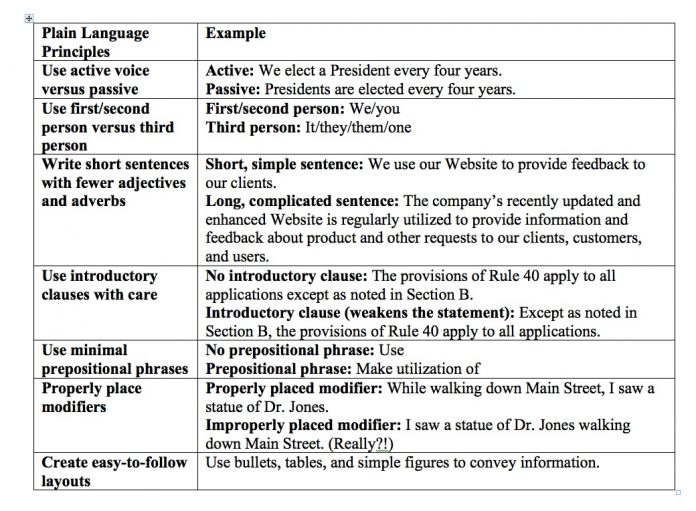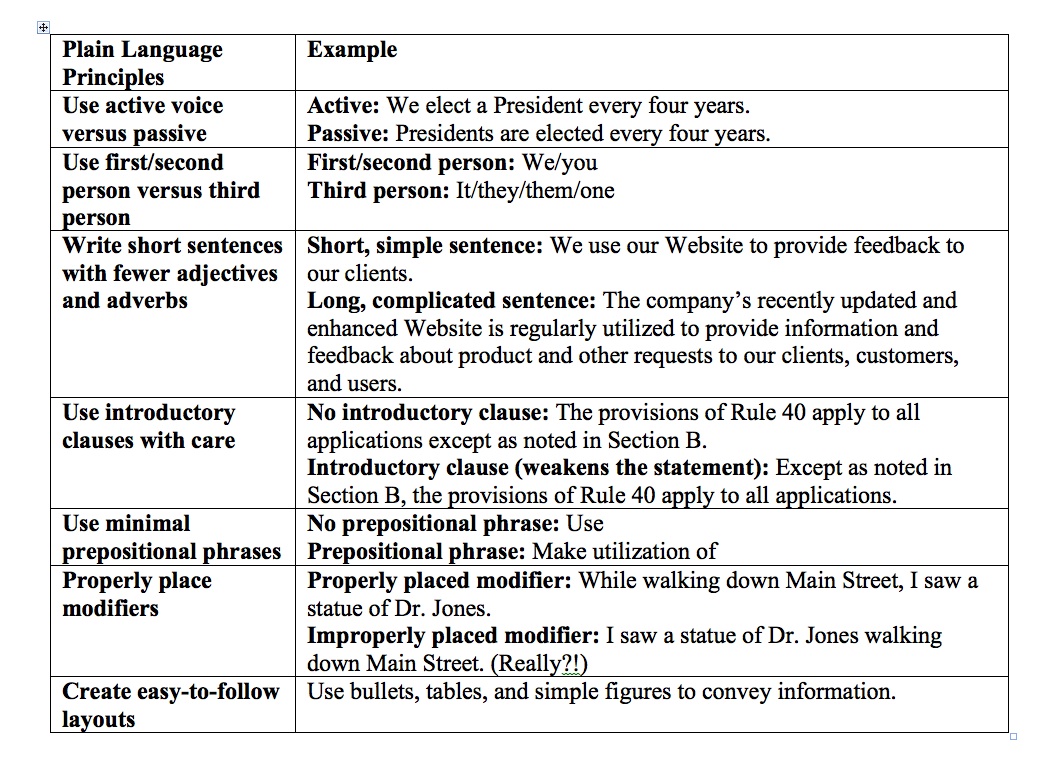
Writing effectively means writing your materials or Web content using plain language and focusing on the needs and goals of your audience. Everything you produce or present should be audience-driven and written in the clearest, simplest language possible.
Documents written in plain language get better results than materials written to “impress.” Have you ever known someone who refused to read the newspaper or a newspaper’s Web content because it was “too easy”? Probably not. But those same people probably don’t read your professional journal, unless it is in their area of expertise, because it is “too hard.”
So how do you write in plain language? Three simple steps:
1. Understand and assimilate the principles of plain language. You have written in plain language if your audience can understand what you wrote, what you are trying to achieve, and what you want from them—after a single reading. See the chart below:

2. Identify your actual audience and target your actions to their needs and goals. We tend to write documents as if we are the intended audience. If your audience doesn’t “see” themselves in your document, they are far less likely to respond the way you expect. Audiences may not have your level of expertise, so they need you to simplify your written content.
Note that simplification is NOT “dumbing down.” It takes thought and hard work to ensure you write effectively so your audience will respond appropriately. It is worth your time to spend a few minutes to determine and write down:
- Why are you writing the document?
- For whom are you writing it?
- What do you want them to do as a result of reading it?
- What are the key points you want to address?
Keep this information in front of you as you write. Your document will stay “on message” and be audience focused.
3. Create, revise, and “test” your document. Documents need structure, planning, organization, and revision to ensure they are written in plain language. How do you do this?
- Create an outline with key points before you start to write.
- Get management buy-in based on the outline and key points.
- Write your document.
- Review, edit, and revise it.
- Test it by having someone else read it.
Janet Arrowood is president of The Write Source, Inc. and author of “Plain Language, Please: How to Write for Results,” published by Rowman & Little field. She is an international trainer in the areas of writing in plain language, writing proposals, and general technical writing. Contact her at janet.c.arrowood@gmail.com.


